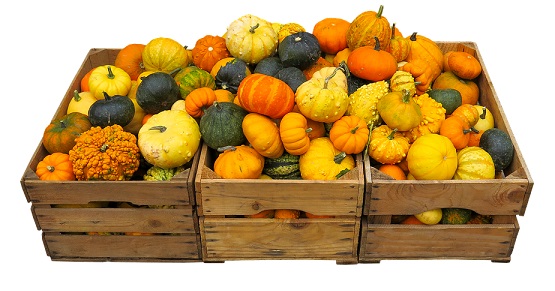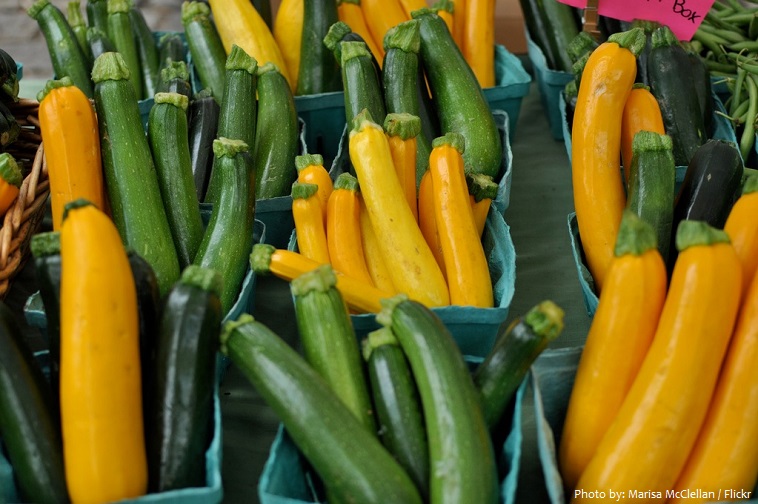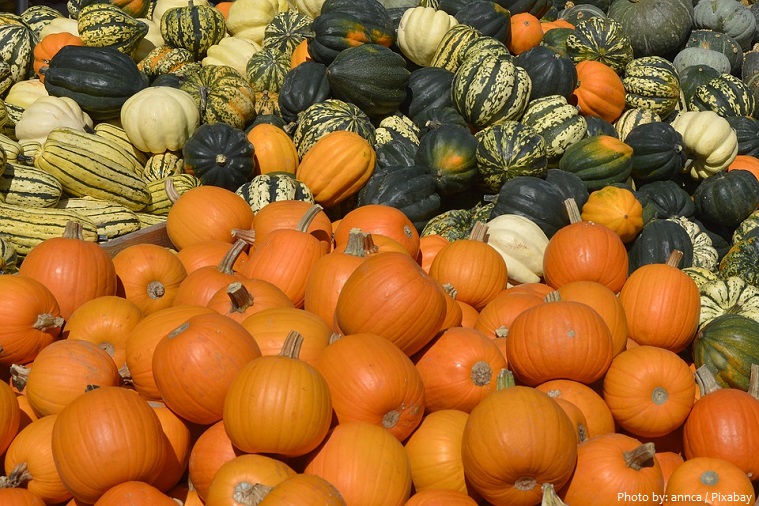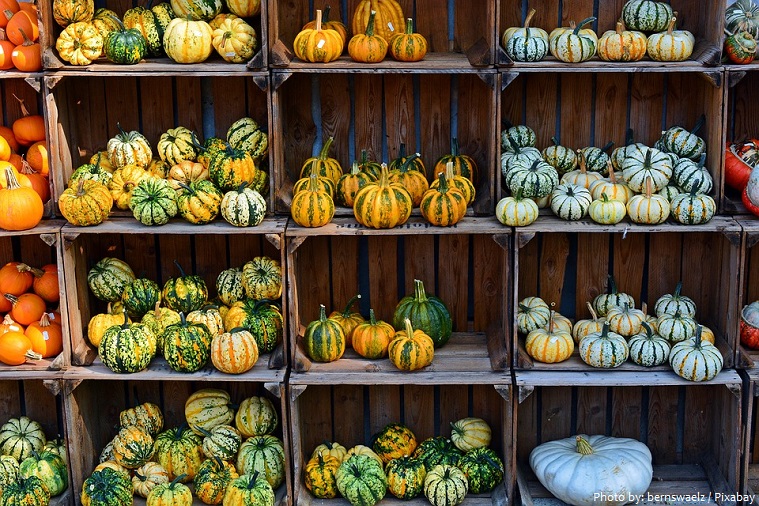Squash (genus Cucurbita) is a plant belonging to the Cucurbitaceae family and native to the New World.
It is one of the earliest and most important of plants domesticated in the New World.
The genus includes from 12-30 species, at least five of which were domesticated independently, long before European contact.
Squash may have been domesticated as early as 7000 to 5000 BC in the Tehuacan Valley of Mexico; evidence suggests that it was cultivated in present-day Ontario by the Huron and related groups by about 1400 AD.
Though native to the western hemisphere, squashes began to spread to other parts of the world after Christopher Columbus’s arrival in the New World in 1492.
The English word “squash” comes from askutasquash which means “a green thing eaten raw”. This is a word from the Narragansett language, which was documented by Roger Williams in his 1643 publication A Key Into the Language of America.
Squash are classified as either summer or winter varieties, depending on when they are harvested.
Summer squash are squashes that are harvested when immature, while the rind is still tender and edible.
Summer squashes include: Cousa squash, Pattypan squash Tromboncino or zucchetta, Crookneck squash, Straightneck squash, zucchini and aehobak.
Summer squash plants are upright and spreading, 45 to 75 cm (18 to 30 inches) high, and produce a great diversity of fruit forms, from flattened, through oblong, to elongate and crooked fruits, coloured from white through cream to yellow, green, and variegated.
Summer squash is a very good source of dietary fiber, vitamin C, vitamin K, riboflavin, vitamin B6, folate, magnesium, potassium and manganese and a good source of protein, vitamin A, thiamin, niacin, phosphorus and copper.
The health benefits of summer squash include improved digestion, slows down aging, lowers blood sugar levels, supports healthy circulation and a healthy heart, improves eye health, boosts energy, benefits for weight loss, improves thyroid and adrenal functions, protects against oxidation and inflammation.
Winter squash differs from summer squash in that it is harvested and eaten in the mature fruit stage when the seeds within have matured fully and the skin has hardened into a tough rind. At this stage, most varieties of this fruit can be stored for use during the winter.
Winter squashes are vining, generally large-fruited, long-season plants that are characterized by fruits that can be stored many months (into wintertime) if kept dry and well above freezing.
Common winter squashes include the butternut squash, delicata, acorn, and spaghetti squashes, and buttercup squashes and giant pumpkins. The fruits show a wide range of sizes, shapes, and colors; the rinds are relatively harder than those for summer squash and are usually considered inedible.
Because of its carotenoid richness, winter squash is an excellent source of vitamin A. It is also a very good source of vitamin C, vitamin B6, fiber, manganese, and copper. Winter squash is a good source of vitamin B2 and B3, folate, pantothenic acid, vitamin K, potassium and magnesium. The seeds of winter squash can also provide is with a valuable amount of vitamin E.
The health benefits of winter squash include ability to reduce cancer, improve vision, protect cardiovascular health, boost immunity, increase fertility, improve bone mineral density, and aid weight loss, among others.
Squashes have many culinary uses including pumpkin pie, biscuits, bread, desserts, puddings, beverages, soups and salad.
Squash are increasingly being used as a tourist attraction in the agri-tourism industry.
The heaviest squash weighs 960.70 kg (2,118 lb), was grown by Joe Jutras (USA) and authenticated by the Great Pumpkin Commonwealth (GPC) at the Southern New England Giant Pumpkin Grower’s 2017 Weigh-Off at Frerichs Farm in Warren, Rhode Island, USA, on 7 October 2017.





